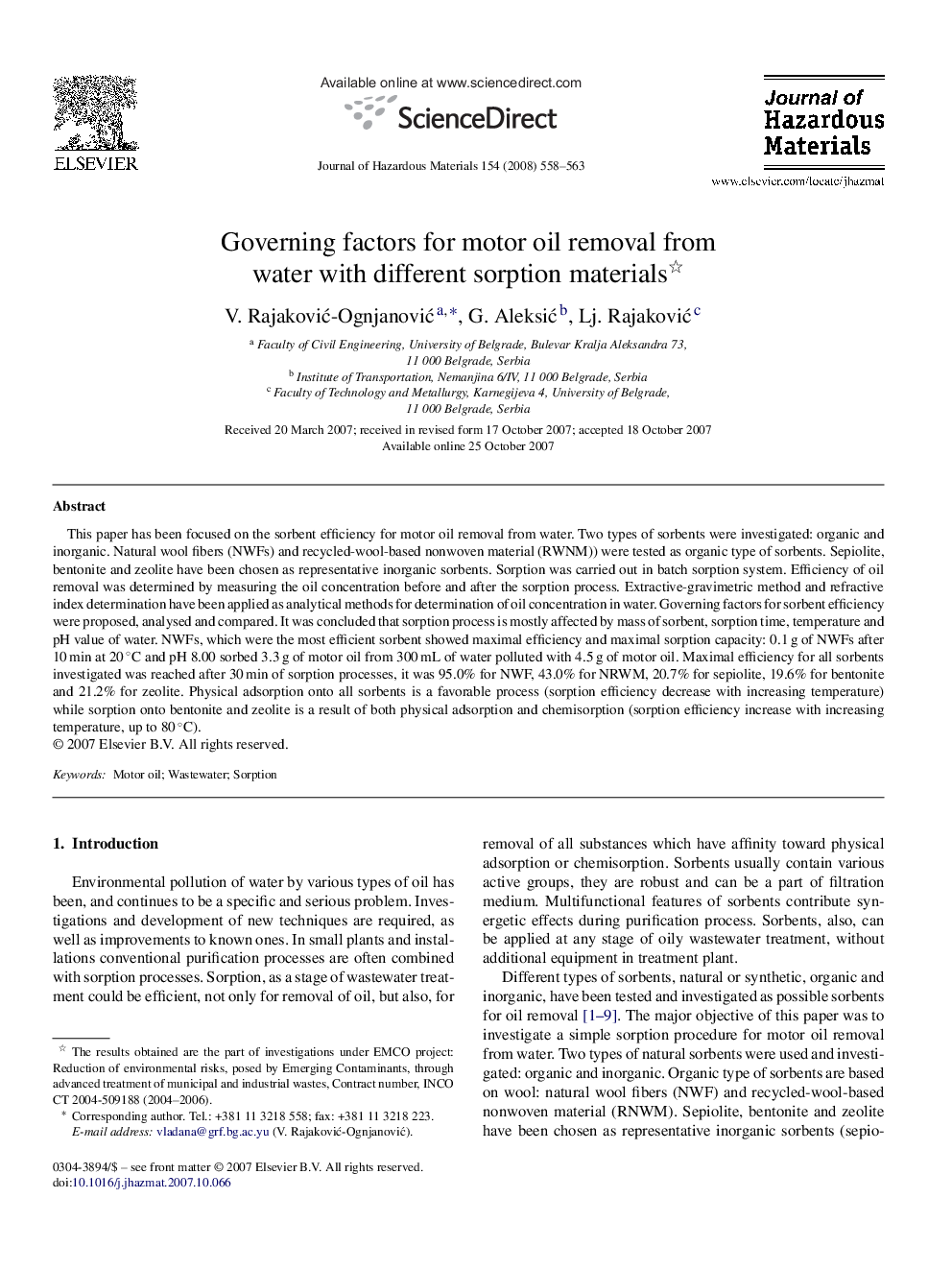| Article ID | Journal | Published Year | Pages | File Type |
|---|---|---|---|---|
| 583632 | Journal of Hazardous Materials | 2008 | 6 Pages |
Abstract
This paper has been focused on the sorbent efficiency for motor oil removal from water. Two types of sorbents were investigated: organic and inorganic. Natural wool fibers (NWFs) and recycled-wool-based nonwoven material (RWNM)) were tested as organic type of sorbents. Sepiolite, bentonite and zeolite have been chosen as representative inorganic sorbents. Sorption was carried out in batch sorption system. Efficiency of oil removal was determined by measuring the oil concentration before and after the sorption process. Extractive-gravimetric method and refractive index determination have been applied as analytical methods for determination of oil concentration in water. Governing factors for sorbent efficiency were proposed, analysed and compared. It was concluded that sorption process is mostly affected by mass of sorbent, sorption time, temperature and pH value of water. NWFs, which were the most efficient sorbent showed maximal efficiency and maximal sorption capacity: 0.1 g of NWFs after 10 min at 20 °C and pH 8.00 sorbed 3.3 g of motor oil from 300 mL of water polluted with 4.5 g of motor oil. Maximal efficiency for all sorbents investigated was reached after 30 min of sorption processes, it was 95.0% for NWF, 43.0% for NRWM, 20.7% for sepiolite, 19.6% for bentonite and 21.2% for zeolite. Physical adsorption onto all sorbents is a favorable process (sorption efficiency decrease with increasing temperature) while sorption onto bentonite and zeolite is a result of both physical adsorption and chemisorption (sorption efficiency increase with increasing temperature, up to 80 °C).
Keywords
Related Topics
Physical Sciences and Engineering
Chemical Engineering
Chemical Health and Safety
Authors
V. RajakoviÄ-OgnjanoviÄ, G. AleksiÄ, Lj. RajakoviÄ,
